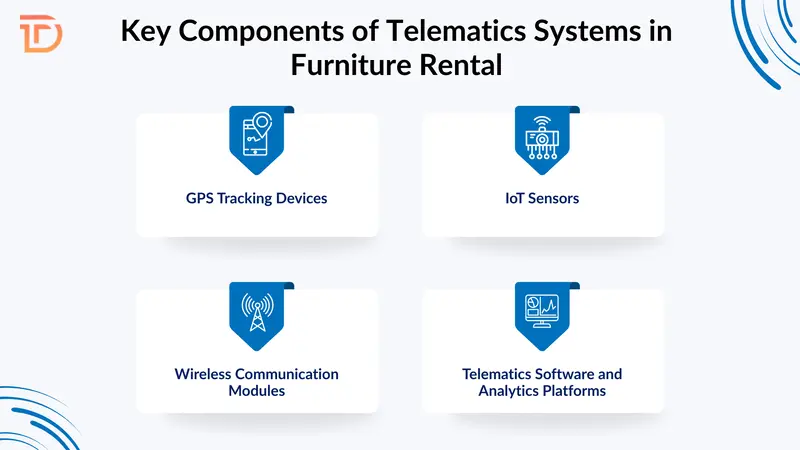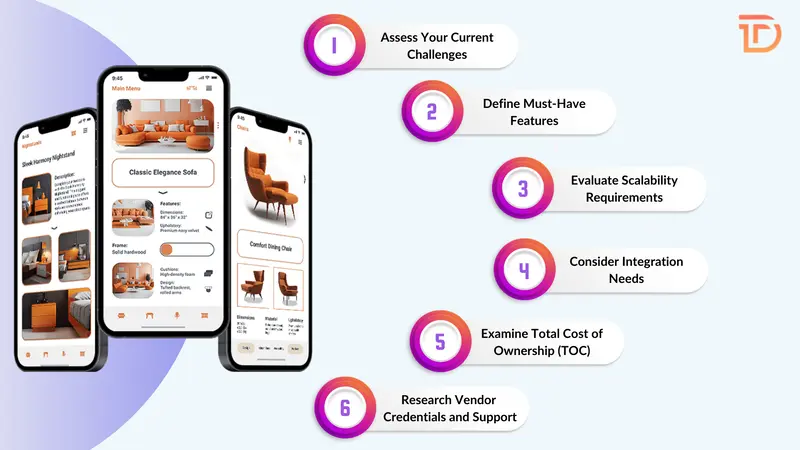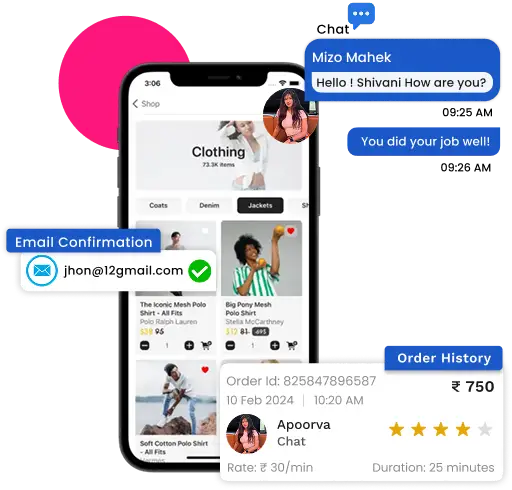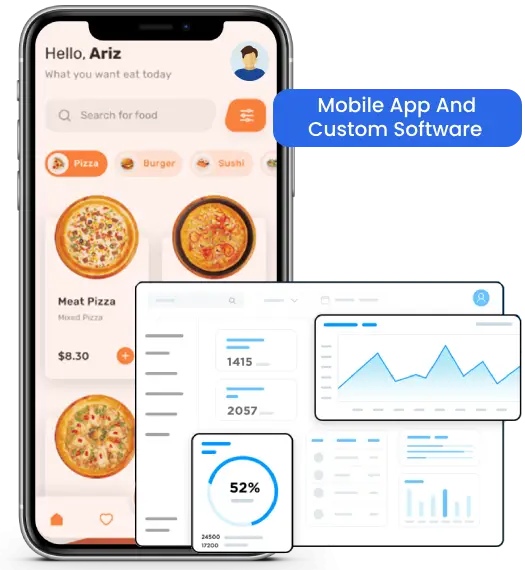Telematics has been a game-changing technology for the automotive and fleet management industry for years now. However, with the rapid shift to digital and technological processes post pandemic, this technology is emerging in the furniture rental sector as well. In the rental industry, maintaining operational efficiency along with keeping customers satisfied is always a challenge. Integration of telematics reduces delays, optimizes logistics, and ensures timely furniture delivery.
According to Future Market Insights and Research Nester, 70%+ consumers prefer rentals for reduced waste, and 20% of consumers prefer furniture made from eco-materials (e.g., recycled wood). Along with these preferences, there are structural shifts in consumer behavior, such as choosing subscription models and anti-ownership. The rental furniture market is likely to grow, and to capitalize on this momentum, rental companies can immensely benefit from telematics real-time monitoring of item location, wear-and-tear, usage patterns, optimizing maintenance, extending product lifecycles, and further minimizing environmental impact through data-driven decisions. To dive deeper into how telematics is revolutionizing furniture rentals, read the complete blog, where we’ll discuss what telematics is, why it matters in furniture rental, its key components, and key factors while choosing the right telematics solution for your business.
What Is Telematics?
According to the Gartner Glossary, telematics is defined as “the integration of telecommunications and informatics, applied to the transmission, storage, and processing of data from remote objects, typically vehicles or other assets, using devices such as GPS, sensors, and wireless communication technologies.”
Extending the application of telematics in the furniture rental business, it proves to be highly beneficial by empowering furniture rental companies to operate sustainably and competitively by enabling live track monitoring, optimizing asset utilization, and providing transparent, personalized experiences.
Why Telematics Matters in Furniture Rental
Telematics encompasses a comprehensive ecosystem of sensors, IoT devices, and software applications; its application goes beyond simple location tracking of furniture. This technology can effectively address industry’s core operational challenges, inventory mismanagement issues, and hurdles in adopting a customer-centric approach. Let’s discuss in detail the challenges that furniture rental businesses face and how telematics can address them.
Challenge 1: Logistics and Delivery Challenges
- Problem: Inefficient routes and high transportation costs
Furniture rental involves frequent multi-stop deliveries and pickups, resulting in wasted fuel and increased labor expenses.
Telematics Solution: By extensively using GPS and sensors, it provides instant updates of vehicle location, speed, movement, and traffic data. This results in minimizing fuel consumption and labor hours by selecting the most efficient delivery paths, reducing costs and environmental impact. - Problem: Poor delivery visibility and customer communication
Without continuous tracking, rental companies fail to provide accurate arrival times of furniture pieces or notify them of any delays. It leads to poor customer experience and loss of trust in the brand.
Telematics Solution: Telematics provides real-time tracking, enabling automated estimated times of arrival (ETAs) notifications to customers, enhancing transparency, and improving the overall rental experience. - Problem: Difficult delivery coordination and scheduling
Manual scheduling is more prone to errors, booking conflicts, and delays in dispatching drivers, resulting in booking conflicts and scheduling issues.
Telematics Solution: Telematics integrated with dispatch software offers an immediate status update of vehicle and driver availability. This enables smarter scheduling and dispatching, as the most suitable drivers are assigned to complete deliveries more efficiently.
- Problem: Inefficient routes and high transportation costs
Challenge 2: Asset Tracking and Inventory Management Challenges
- Problem: Inventory mismanagement and inaccurate data
Inaccurate inventory tracking causes double-booking or unavailability, disrupting operations.
Telematics Solution: Rental inventory management software can track items in use, in transit, or in storage, ensuring accurate availability data and preventing booking errors.
- Problem: Inventory mismanagement and inaccurate data
Challenge 3: Maintenance and Operational Challenges
- Problem: Reactive maintenance and equipment downtime
Not paying attention to timely maintenance results in unplanned breakdowns that disrupt schedules and increase repair costs, frustrating customers.
Telematics Solution: IoT sensors monitor furniture condition (e.g., structural stress in high-value items). This enables predictive maintenance to prevent failures, reduce downtime, and align with the consumer preference for waste-reducing rentals. - Problem: Equipment loss, theft, and misuse
Keeping track of high-value furniture is a key inventory challenge. High-value furniture is more prone to loss, theft, or improper use, leading to significant financial losses.
Telematics Solution: GPS tracking provides real-time location data, while geofencing alerts companies when furniture leaves designated areas, enhancing security and aiding recovery. - Problem: Underutilization of rental assets
Without having data or usage patterns of assets, companies might not know about assets frequently rented or sitting idle. It results in missing revenue opportunities.
Telematics Solution: Usage analytics identify underutilized or overused furniture, enabling data-driven decisions to optimize inventory allocation and investment. - Problem: Difficulty tracking usage for billing and maintenance
Manual usage tracking is error-prone, affecting billing accuracy and maintenance schedules.
Telematics Solution: Automated tracking of usage hours ensures precise billing and timely maintenance, improving operational efficiency and customer trust. - Problem: Damage detection after the rental period
Undetected damage during rentals leads to costly repairs upon return.
Telematics Solution: Sensors integrated with telematics detect unusual usage patterns in real-time (e.g., excessive wear on premium furniture), allowing immediate action to mitigate damage and support sustainability goals.
- Problem: Reactive maintenance and equipment downtime
Key Components of Telematics Systems in Furniture Rental
A comprehensive telematics solution for furniture rental comprises several interconnected components, each playing a vital role in the overall system effectiveness. Understanding these components helps businesses appreciate the technology’s scope and potential impact.

GPS Tracking Devices
They form the foundation of any telematics system. This component provides instant position data of furniture items, whether they’re in transit, at a customer’s location, or in storage.
- Application: It prevents loss or theft by tracking furniture movement and enables geofencing, which triggers alerts if an item leaves a designated area (e.g., a city zone for urban rentals).
- Benefits: Better security of furniture pieces, reduced losses, and streamlined logistics.
IoT Sensors
IoT sensors are embedded in furniture pieces for continuous monitoring on usage, condition, and environmental factors (e.g., stress on high-value items like modular sofas or temperature exposure for wooden pieces).
- Application: Alert providers of potential damage during a rental period, avoiding costly repairs and enabling predictive maintenance to extend furniture lifecycles.
- Benefits: Supports proactive damage detection and minimizes downtime
Wireless Communication Modules
These modules, such as cellular, Wi-Fi, or Bluetooth, transmit data from sensors and GPS devices to centralized software platforms.
- Application: Provide customers with delivery ETAs and coordinate logistics.
- Benefits: Enhances customer trust and facilitates smooth communication
Telematics Software and Analytics Platforms
Cloud-based software to transform raw sensor data into actionable business intelligence, offering dashboards for inventory, usage, and performance analytics.
- Application: To identify underutilized assets, optimize inventory allocation, and predict maintenance needs based on usage patterns
- Benefits: Enables data-driven decision-making and reduces operational costs.
How to Choose the Right Telematics Solution for Your Furniture Rental Business?
Choosing the right telematics solution can determine success in tracking, maintenance, and inventory management—the three pillars of profitable furniture rental operations.
While there is a plethora of options for telematics development services, selecting the right one requires careful evaluation of business requirements, cost, functionality, scalability, implementation complexity, and vendor trustworthiness.

Assess Your Current Challenges
Gain an understanding of specific problems you’re trying to solve, whether that’s lost inventory, excessive maintenance costs, poor delivery performance, or limited visibility into operations. Understanding your pain points ensures you prioritize features that address actual issues rather than falling for overhyped features.
Define Must-Have Features
Choose a solution that has features based on your operational model. For example, companies with large delivery fleets should prioritize GPS-based route optimization and real-time ETA notifications to improve logistics efficiency. While businesses renting high-value or modular furniture (e.g., ergonomic office chairs or eco-friendly pieces) need item-level tracking and condition-monitoring sensors to prevent damage and align with sustainability preferences.
Evaluate Scalability Requirements
To evaluate scalability, consider both current operations and your future business plans. A perfect solution for tracking 500 furniture pieces might struggle at 5,000. Similarly, systems designed for local operations may lack capabilities needed for regional or national expansion. Choose software with scalable architectural capacity to grow with your business, even if you don’t need maximum scale immediately.
Consider Integration Needs
The solution you choose should integrate with your current furniture rental software, CRM, or accounting system. Verify with the vendor that the solution has robust APIs, pre-built connectors, and integration support. Poor integration forces staff to manually reconcile data across systems, negating any efficiency gains from the telematics.
Examine Total Cost of Ownership (TOC)
Analyze TOC beyond initial purchase prices. Telematics systems incur ongoing costs, including software subscriptions, hardware replacement, and support services. Request a detailed three-to-five-year cost breakdown from vendors. Calculate expected ROI by estimating savings like reduced lost inventory, reduced fuel costs from route optimization, or decreased maintenance expenses through predictive analytics.
Research Vendor Credentials and Support
Choose vendors with proven expertise in telematics for rentals, ideally in providing the furniture rental industry. Go through their track record by evaluating case studies or customer testimonials to verify reliability. Assess their support model, including response times for technical issues and frequency of software updates to address evolving needs.
Conclusion
Telematics is no longer limited to fleets and automotive—it is emerging as a game-changing solution for the furniture rental industry as well. It has the potential to address critical challenges such as logistics, inventory management, and keeping customers satisfied. By leveraging GPS tracking, IoT sensors, wireless communication, and analytics platforms, rental companies can optimize delivery routes, prevent asset loss, reduce downtime through predictive maintenance, and enhance customer trust with transparency.
At this point, the real challenge for many furniture rental companies lies in choosing and implementing the right telematics solution. That’s where Dreamer Technoland comes in. Dreamer Technoland offers custom software development services and has years of expertise in furniture‑rental software, addressing the unique challenges of the rental industry. Our deep understanding of rental operations helps us deliver solutions that streamline every aspect of your business. We work closely with our clients to identify pain points and design custom features that address their unique requirements.







